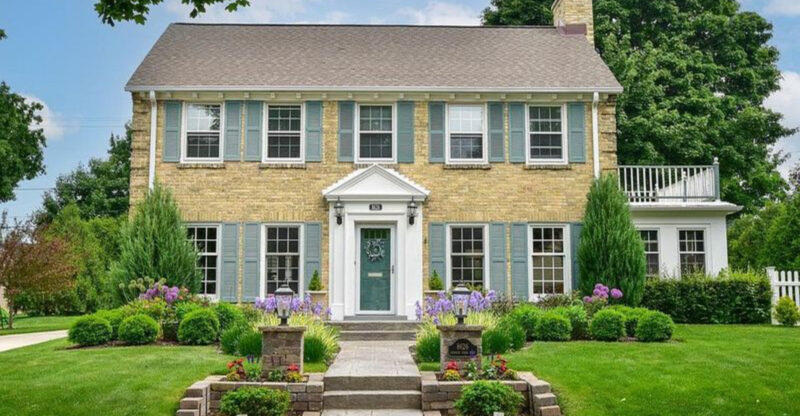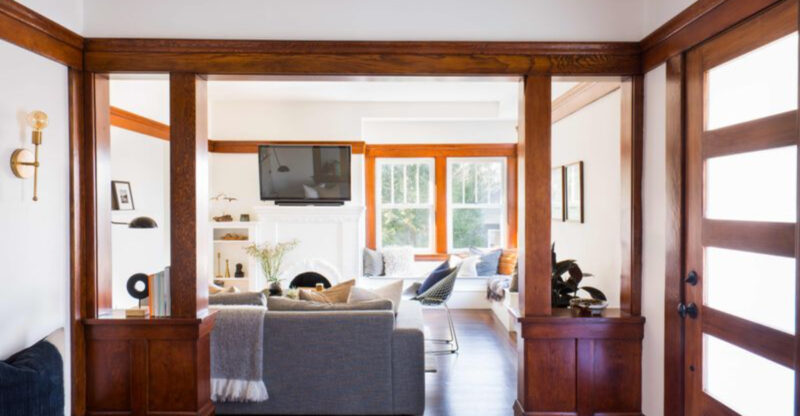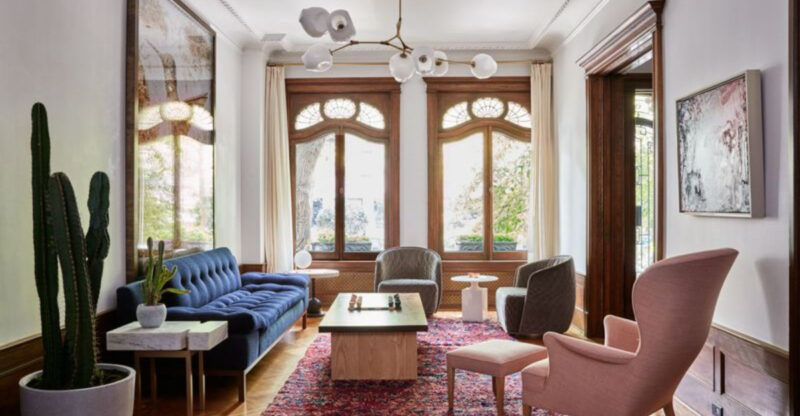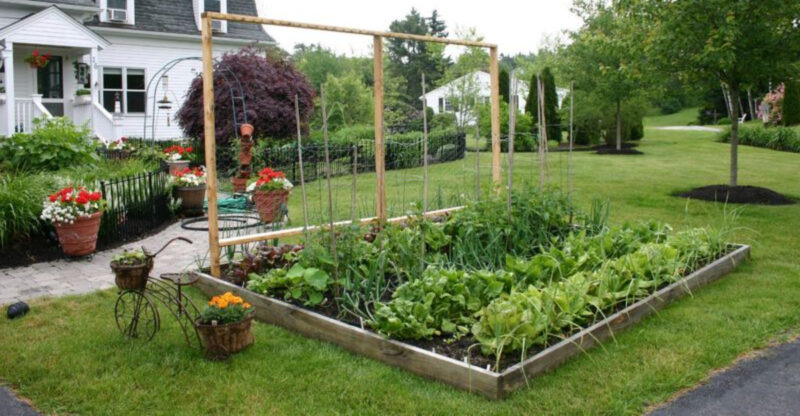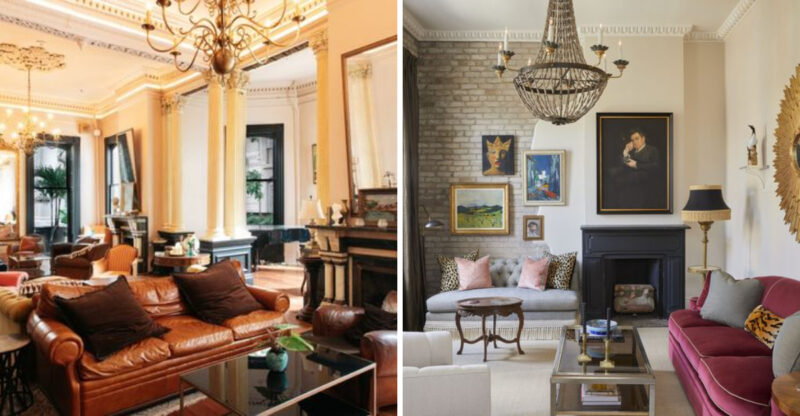10 Earth-Toned Kitchens That Strike The Perfect Balance Between Modern & Timeless (Plus 10 That Are A Bad Choice)
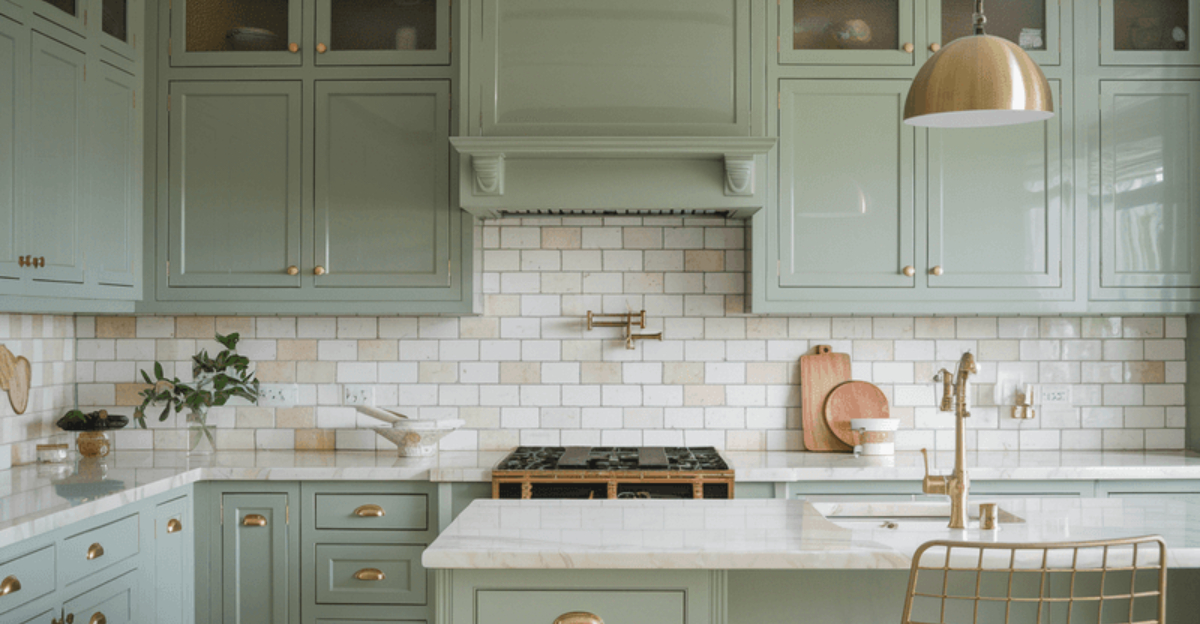
Kitchen design can make or break your home’s overall feel. Earth tones bring warmth and timelessness to cooking spaces, but they require careful planning to avoid looking dated.
This collection highlights stunning earth-toned kitchens that strike the perfect balance between contemporary and classic, alongside approaches best left behind.
1. Warm Taupe Cabinetry With Natural Stone Counters
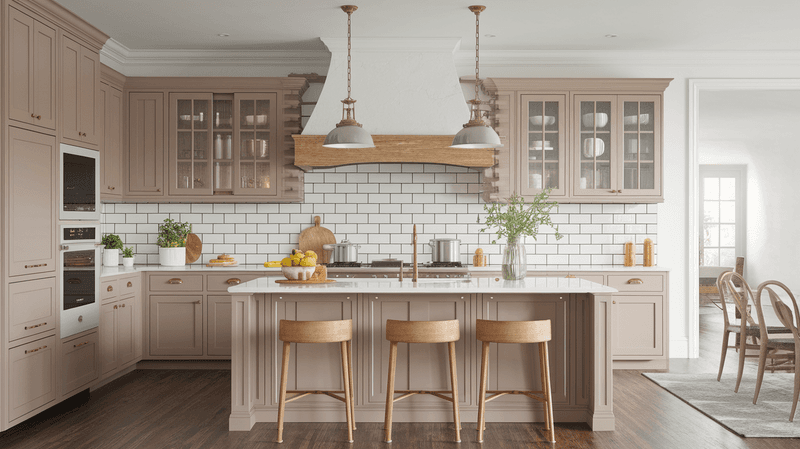
Subtle neutrals create an inviting atmosphere that never goes out of style. Warm taupe cabinets offer a soft backdrop that complements almost any design element you might introduce later.
The natural veining in stone countertops adds visual interest without overwhelming the space. This combination works beautifully in both traditional farmhouses and sleek modern homes.
2. Olive Green Islands Paired With Neutral Backsplashes
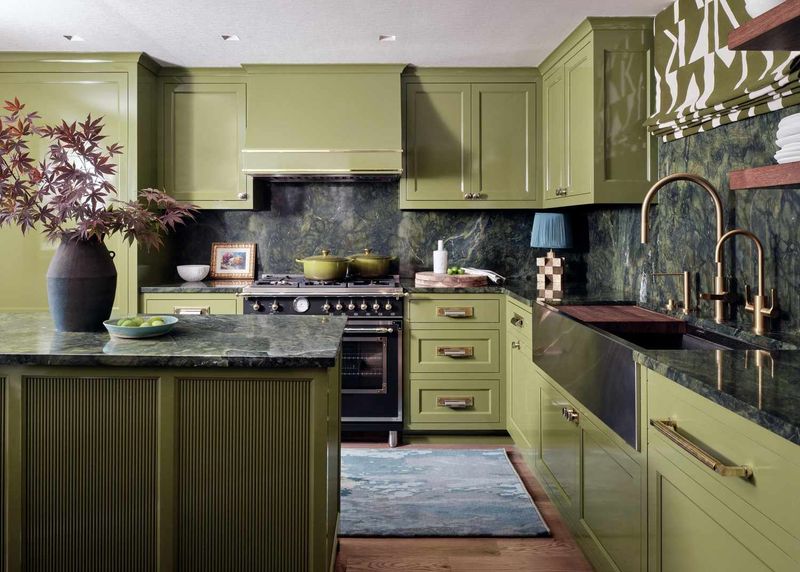
Statement islands don’t have to scream for attention. An olive green centerpiece anchors the room while neutral backsplashes prevent the color from becoming overwhelming.
This clever pairing creates a focal point without sacrificing versatility. The earthy green brings nature indoors while maintaining a sophisticated edge that works in contemporary settings.
3. Soft Terracotta Walls And Matte Black Fixtures
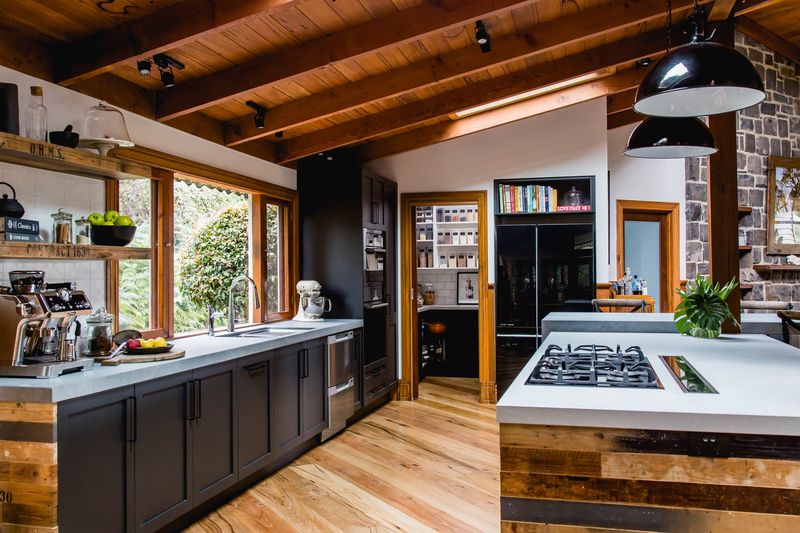
Baked clay hues evoke Mediterranean warmth while matte black hardware adds contemporary punch. The contrast between soft terracotta and structured black elements creates visual tension that keeps the design interesting.
This combination feels simultaneously ancient and fresh. Perfect for homeowners who appreciate history but don’t want to live in a time capsule.
4. Rich Brown Wood Cabinets Balanced With Light Quartz
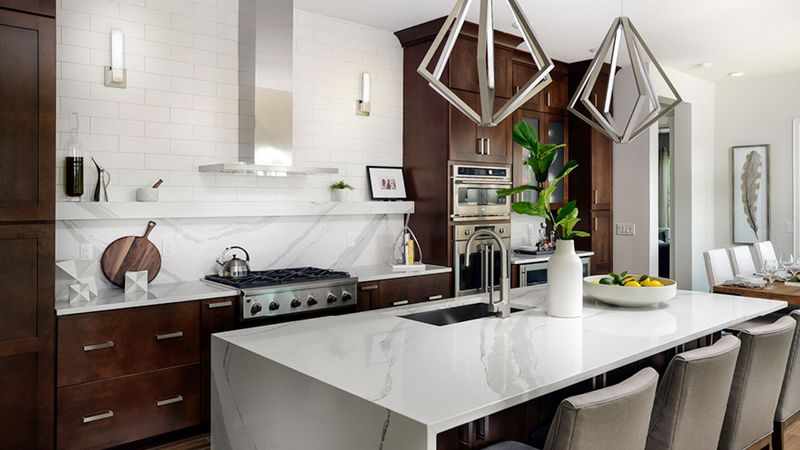
Natural timber brings undeniable character to any space. Rich brown cabinetry grounds the kitchen while light quartz countertops prevent it from feeling cave-like or dated.
The contrast creates a perfect visual balance. Wood’s natural warmth softens the clinical feel that can sometimes come with contemporary design, resulting in a space that feels both cutting-edge and comfortably lived-in.
5. Beige And Sand Color Schemes With Subtle Texture
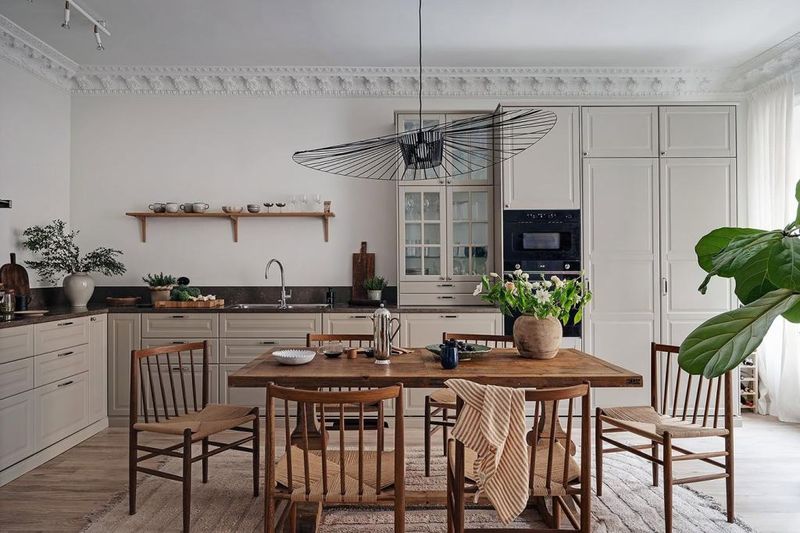
Layered neutrals create depth without chaos. Beige and sand palettes provide a calming foundation while textured elements – like grasscloth wallpaper or handmade tiles – add dimension.
These kitchens avoid the sterile feel of all-white spaces. The key is incorporating varied materials with similar tones, creating visual interest through texture rather than bold color contrasts.
6. Charcoal Accents In Earthy Color Palettes
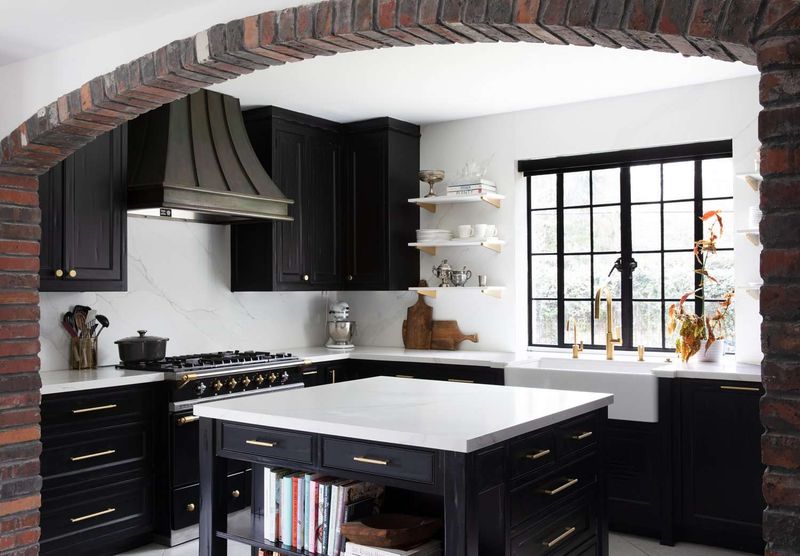
Strategic dark elements create dramatic focus without overwhelming. Charcoal accents – whether in island cabinetry, range hoods, or window frames – anchor earthy palettes and prevent them from feeling wishy-washy.
The high-contrast approach feels decidedly current. Yet because the dark elements are limited to architectural features, the look won’t quickly date itself like trendy colored appliances might.
7. Sage Green Cabinetry With Brass Hardware
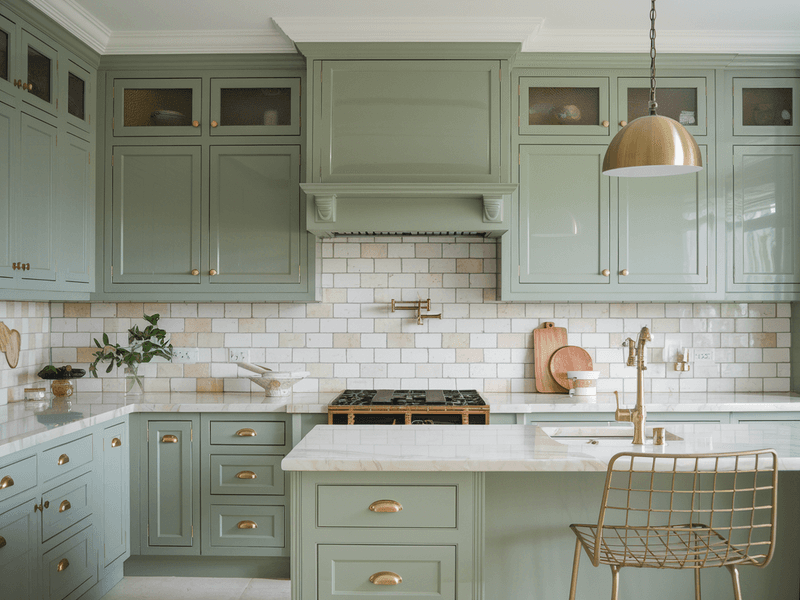
Botanical inspiration meets metallic warmth in this winning combination. Sage cabinetry provides a gentle color that connects to nature while avoiding the intensity of bolder greens.
Brass hardware adds a touch of luxury that elevates the humble sage. The warm metal tones complement the cool green perfectly, creating a balanced look that feels both fresh and established.
8. Warm Gray Tones Mixed With Natural Wood Beams
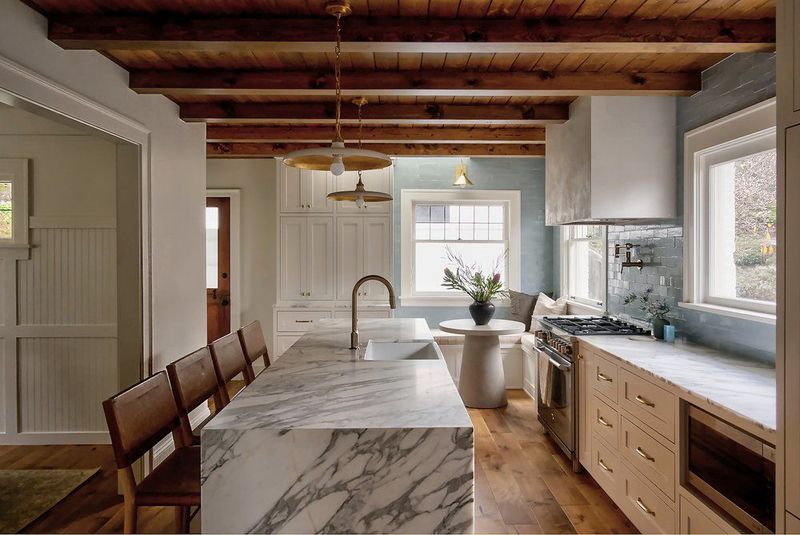
Architectural elements create character in neutral spaces. Exposed wooden beams add rustic charm while warm gray cabinetry and walls maintain a contemporary feel.
This marriage of old and new feels intentional rather than confused. The wood brings warmth and history while the restrained color palette keeps the look fresh and adaptable to changing tastes.
9. Clay-Inspired Tiles With Clean White Cabinetry
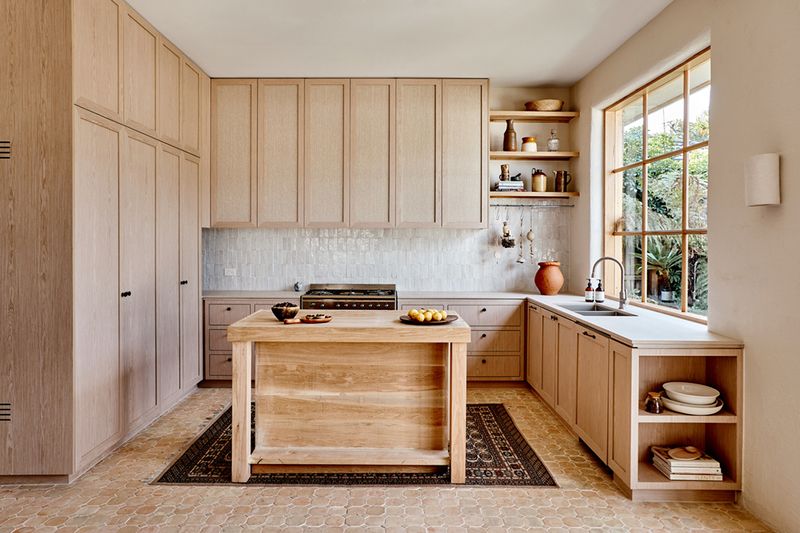
Artisanal touches transform basic white kitchens. Handmade clay-colored tiles bring earthy warmth and artisanal character while crisp white cabinets keep the look clean and timeless.
The contrast creates visual interest without overwhelming the senses. This approach works particularly well for homeowners who want earth tones but fear committing to colored cabinetry that might feel dated later.
10. Deep Chocolate Kitchens With Light Flooring
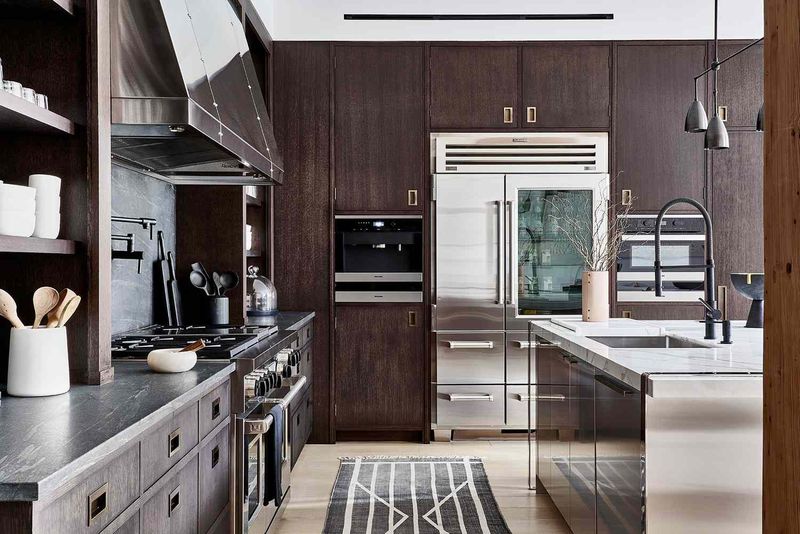
Dramatic upper elements need balancing with lighter foundations. Deep chocolate cabinetry creates a cozy, enveloping feeling while light floors prevent the space from becoming oppressive.
This high-contrast approach feels both bold and balanced. The rich brown cabinets add warmth and sophistication while the light flooring keeps the space feeling open and airy.
11. Overly Dark Brown Cabinets Making Rooms Feel Heavy
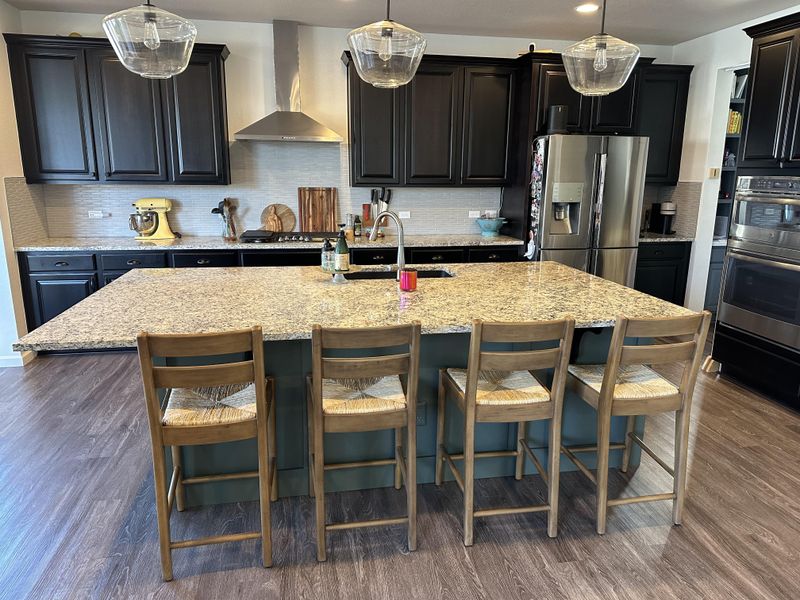
Brooding isn’t the same as cozy. Kitchens overwhelmed by dark brown cabinetry without adequate contrast or lighting can feel oppressive rather than welcoming.
These spaces often look dated and cave-like. Without lighter elements to create visual breathing room, dark brown kitchens can make even spacious rooms feel cramped and gloomy.
12. Olive Green Walls Paired With Mismatched Wood Tones
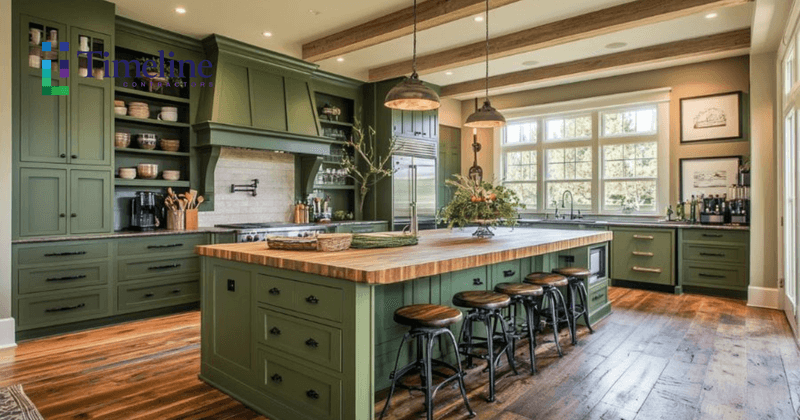
Color coordination matters even in earth-toned spaces. Olive walls can look muddy and unsophisticated when combined with clashing wood finishes that fight for attention.
The result feels chaotic rather than curated. This common mistake happens when homeowners collect various wooden elements without considering how their undertones interact with wall colors.
13. Terracotta Used Excessively On Floors And Walls
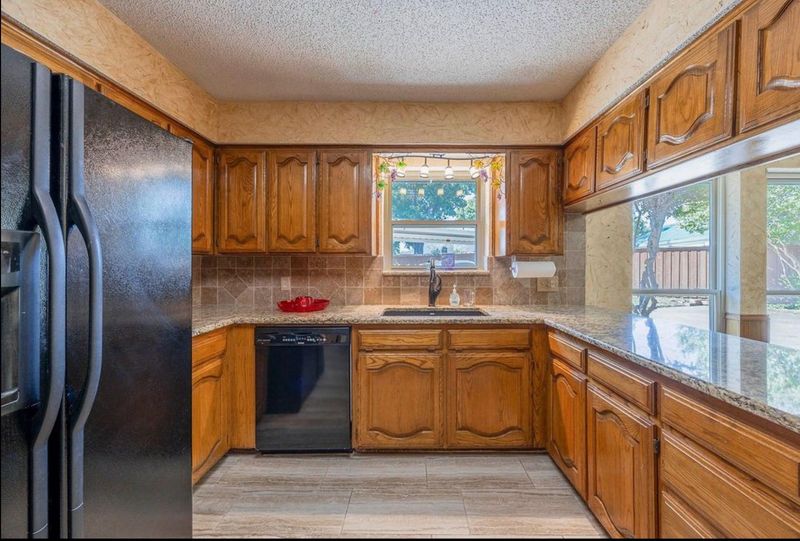
Too much of a good thing becomes overwhelming. Terracotta on both floors and walls creates a terracotta prison that feels dated and overwhelming rather than warmly Mediterranean.
This approach lacks the contrast needed for visual interest. Breaking up terracotta with neutral elements would create a more balanced, contemporary interpretation of this classic material.
14. Busy Earth-Toned Granite With Too Many Patterns

Visual chaos destroys kitchen harmony. Heavily veined brown and beige granite with multiple competing colors creates a visually exhausting surface that fights with everything else in the room.
These countertops often become the unwanted focal point. Simpler stone options or solid-colored surfaces would allow other design elements to shine while still incorporating natural materials.
15. Dark Chocolate Cabinets In Small, Low-Light Spaces
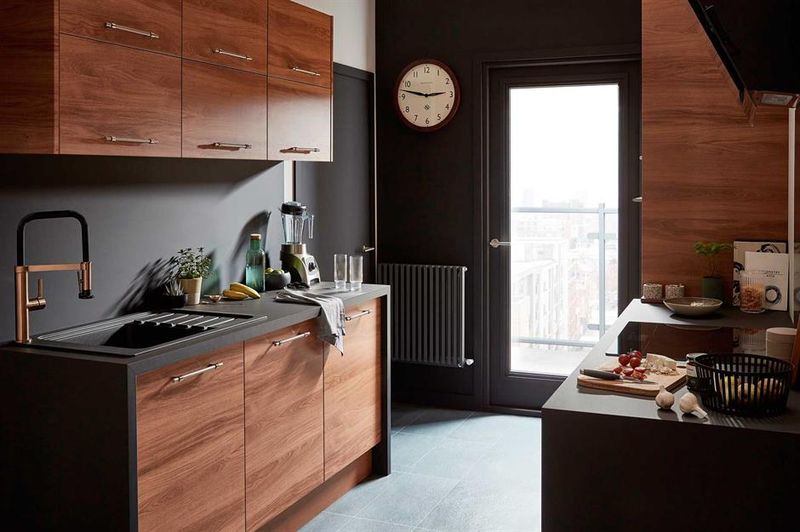
Context determines whether a color works or fails. Deep brown cabinetry that might look sophisticated in a spacious, well-lit kitchen becomes oppressive in small or poorly illuminated spaces.
These kitchens often feel like gloomy caves. The rich color absorbs rather than reflects the limited available light, making the space feel even smaller and more confined.
16. Muddy Beige Without Contrast Or Accents
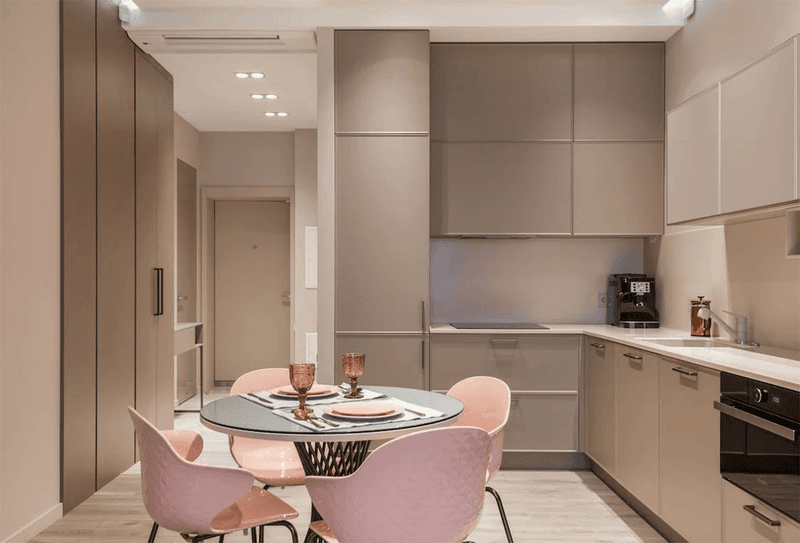
Neutrals need friends to shine. All-beige kitchens without contrasting elements or interesting textures become forgettable, bland spaces that lack personality and definition.
These kitchens often feel unfinished rather than intentional. Adding contrast through hardware, lighting fixtures, or even strategic pops of color would transform these spaces from forgettable to fantastic.
17. Overuse Of Dark Gray Creating A Cold Atmosphere
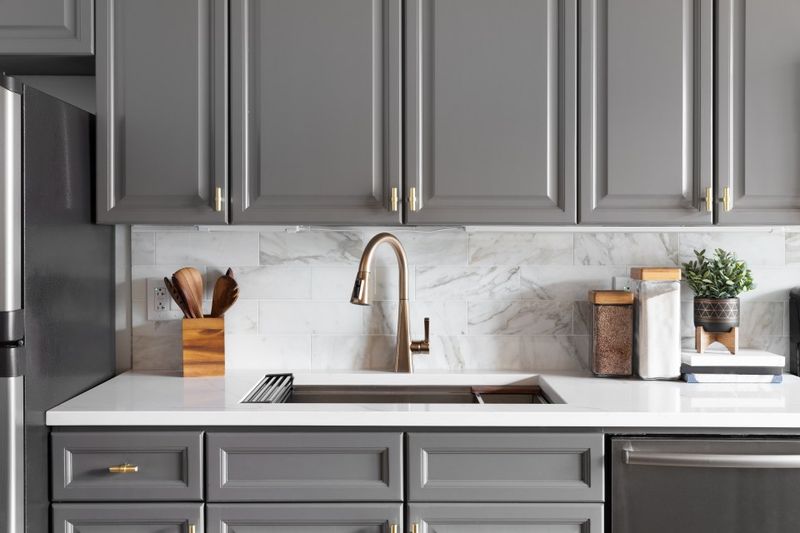
Industrial doesn’t have to mean uninviting. Kitchens dominated by dark gray elements often feel sterile and unwelcoming rather than achieving the warm-yet-modern vibe most homeowners desire.
These spaces can feel perpetually gloomy. Balancing dark gray with warmer earth tones would create a more inviting atmosphere while maintaining contemporary appeal.
18. Orange-Toned Woods Clashing With Modern Fixtures
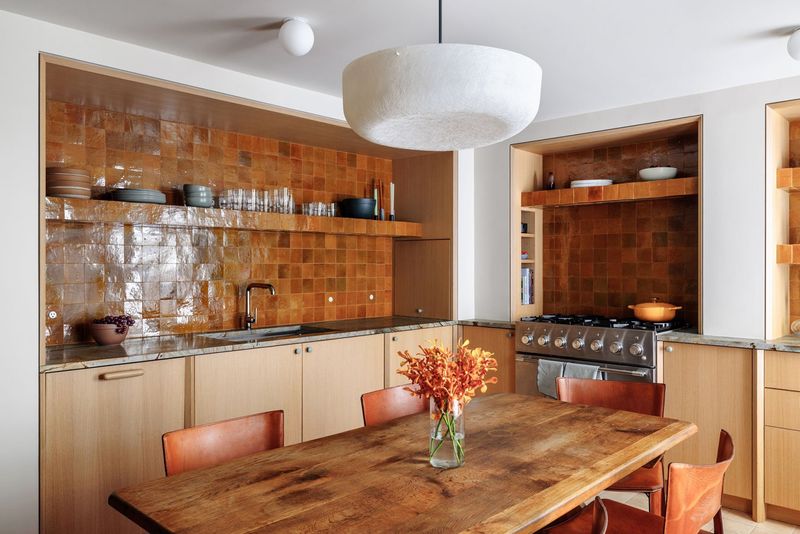
Era-appropriate pairings matter for cohesive design. Honey oak or cherry cabinets with strong orange undertones fight against sleek contemporary fixtures and appliances, creating a disjointed look.
The combination feels like two different kitchens colliding. Either embracing the warmth with traditional fixtures or updating the wood with refinishing would create a more harmonious space.
19. Excessive Brown-On-Brown Color Schemes
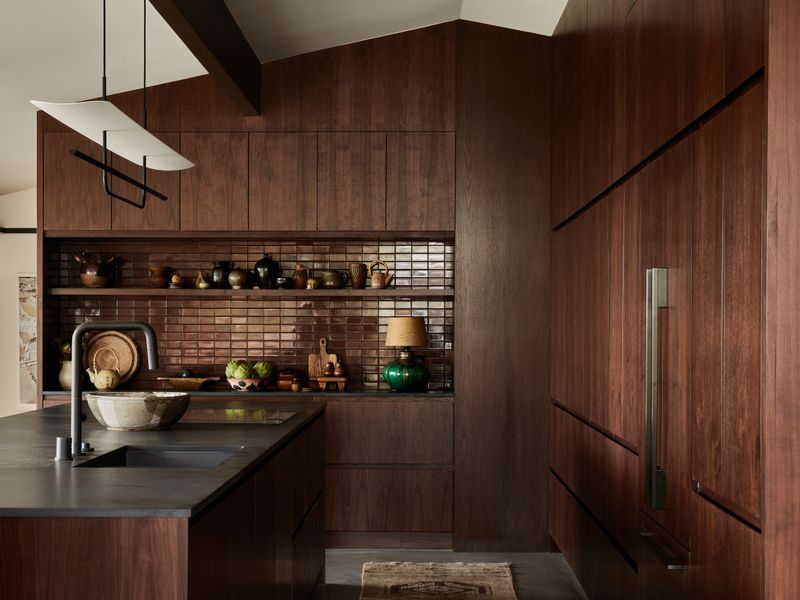
Monochromatic doesn’t mean monotonous. Kitchens where every element – from cabinets to counters to backsplashes – features the same brown tone lack the visual contrast that creates interest.
The result resembles a chocolate factory explosion. Breaking up the brown with contrasting elements would define the space and highlight architectural features rather than blending everything into a brown blur.
20. Earth Tones Paired With Outdated Oil-Rubbed Bronze Hardware
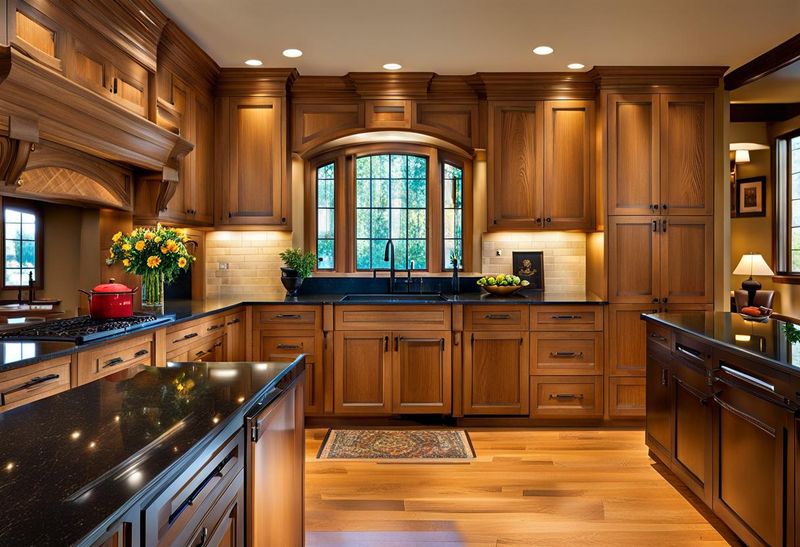
Hardware finishes date kitchens faster than almost any other element. Heavily distressed oil-rubbed bronze with artificial antiquing often looks fake and dated when paired with earth-toned kitchens.
This combination screams early 2000s. Swapping for cleaner hardware finishes like brushed brass, matte black, or even simple stainless would immediately modernize these spaces while maintaining their earthy appeal.


